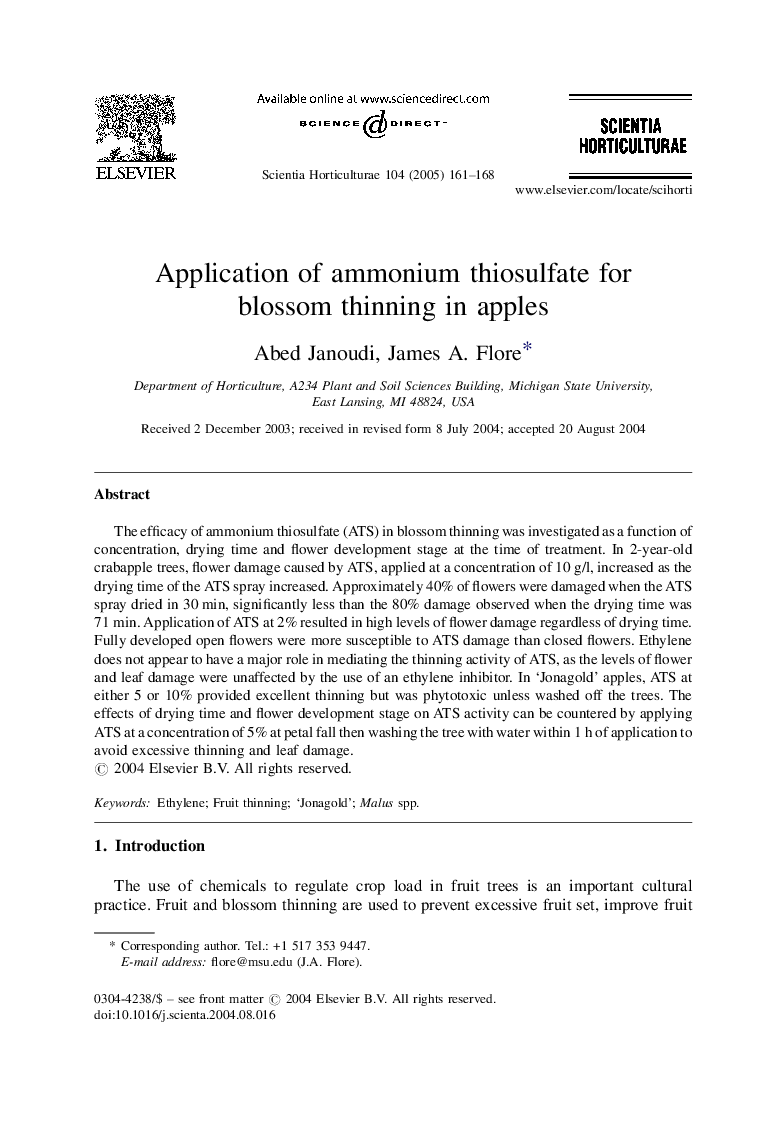| Article ID | Journal | Published Year | Pages | File Type |
|---|---|---|---|---|
| 9488841 | Scientia Horticulturae | 2005 | 8 Pages |
Abstract
The efficacy of ammonium thiosulfate (ATS) in blossom thinning was investigated as a function of concentration, drying time and flower development stage at the time of treatment. In 2-year-old crabapple trees, flower damage caused by ATS, applied at a concentration of 10Â g/l, increased as the drying time of the ATS spray increased. Approximately 40% of flowers were damaged when the ATS spray dried in 30Â min, significantly less than the 80% damage observed when the drying time was 71Â min. Application of ATS at 2% resulted in high levels of flower damage regardless of drying time. Fully developed open flowers were more susceptible to ATS damage than closed flowers. Ethylene does not appear to have a major role in mediating the thinning activity of ATS, as the levels of flower and leaf damage were unaffected by the use of an ethylene inhibitor. In 'Jonagold' apples, ATS at either 5 or 10% provided excellent thinning but was phytotoxic unless washed off the trees. The effects of drying time and flower development stage on ATS activity can be countered by applying ATS at a concentration of 5% at petal fall then washing the tree with water within 1Â h of application to avoid excessive thinning and leaf damage.
Keywords
Related Topics
Life Sciences
Agricultural and Biological Sciences
Horticulture
Authors
Abed Janoudi, James A. Flore,
